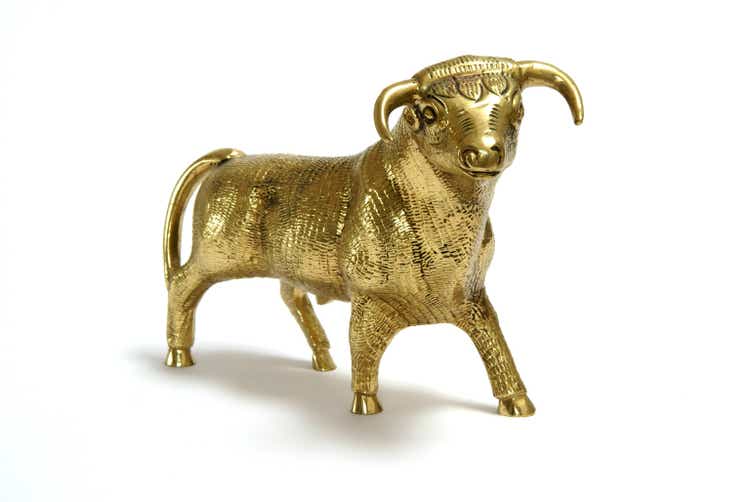TommL
By Sachin Patel
At a Glance
- Global instability, central bank purchases and AI demand could continue to impact gold prices
- Silver prices could find strength amid rising industrial demand and a high gold-silver ratio
Gold has enjoyed a spectacular bull run in the past year, with prices jumping by nearly 30% since January 2024. Factors like geopolitical and economic uncertainty could continue to support gold’s rally this year, though the potential for fewer rate cuts and a stronger U.S. dollar could put downward pressure on prices.
The Case for Gold
As of early February, the price of gold is around US$2,873/oz, surpassing October’s record high of just under US$2,788/oz according to data from Gold Price. A combination of factors has come together to create an extremely supportive environment for gold, with global instability, including the conflicts in Ukraine and the Middle East, and increased purchasing by central banks, particularly in China, India and other emerging economies, all making the yellow metal shine for investors.

Meanwhile, gold could find further support from increased policy uncertainty in the U.S. Outside of the U.S., political instability in Korea and France could further enhance the metal’s appeal as a safe haven asset.
Gold and U.S. Policy
Despite these supportive conditions, there are some potential clouds gathering on the horizon for gold. Gold dropped to a near two-month low following the U.S. election.
A number of factors contributed to the decline. In the short term, equities have appeared more attractive to investors as they anticipate an upcoming period of pro-business policies, such as reduced tax and regulation. At the same time, the U.S. dollar recently hit a two-year high.
Gold traditionally has a negative correlation with the U.S. dollar, as a strong dollar makes gold purchases more expensive for overseas buyers. However, it should be noted that this correlation has uncoupled recently, with both the U.S. dollar and gold increasing in value last year – the former on the strength of the U.S. economy and the latter on expectations of interest rate cuts and ongoing global uncertainty.
Although October’s U.S. jobs report pointed to a weaker-than-expected labor market, much of the weakness was attributed to one-off factors such as hurricanes and major strikes, and November’s data showed a strong rebound, reducing the urgency for interest rate cuts. Expectations that interest rate cuts may be slower than expected has, in turn, impacted bond yields, making gold seem relatively less attractive to investors.
On the other hand, expectations that the U.S. budget deficit could increase could provide some support for gold. A growing budget deficit, and by extension an increasing national debt, risks undermining confidence in the economy, which could in turn increase investors’ appetite for safe haven assets like gold. Concern about the U.S. economy could also weaken the U.S. dollar, further increasing the appeal of gold.
Strong Global Demand
Outside of the U.S., purchasing trends are still expected to remain positive for gold going forward, providing further support. In its Q3 Gold Demands Trends report, the World Gold Council pointed to the strongest increase in Q3 gold demand since its series began, with total demand exceeding $100bn for the first time. The report, which pre-dated the U.S. election result, showed demand from investors more than doubled year-on-year, driven by the need for portfolio protection and diversification in the face of ongoing economic and geopolitical uncertainty, an outlook that is not likely to change. Demand was particularly strong among ETFs and western investors. Although central bank buying eased somewhat, it remained robust and in line with the same period of 2022.
At the same time, the artificial intelligence boom continued to drive demand for gold for use in technology. The only fall recorded was in demand for jewelry, which dropped 12% by volume due to the high price of gold, although high prices meant demand by value was actually up by 13%. Overall, total global gold demand increased 5% year-on-year to 1,313t in the third quarter.
Is Silver Also Having a Moment?
Silver, which had been enjoying a strong rally driven by a combination of rising industrial demand and supply constraints, also suffered a price dip in the aftermath of the U.S. election. The price of silver, which is both an industrial and a precious metal, has increased by 33% since the start of 2025. Although its path has been choppier than gold’s, its October high was within touching distance of prices not seen for more than a decade.

Silver is benefiting from strong demand from the industry. In particular, growth in the electric vehicle sector, which uses silver in batteries and charging infrastructure. High demand for EVs is expected to be a significant driver for the silver price going forward. Meanwhile, supply-side constraints could also help to push prices higher, with the amount of silver mined in 2024 estimated to be marginally lower than the previous year, according to the Silver Institute.
The metal also faces some headwinds. Like gold, silver typically has an inverse correlation with the U.S. dollar. As a result, the recent strength of the dollar could continue to put downward pressure on price gains, at least in the short term. Over the longer term, its outlook will also be impacted by the pace of interest rate cuts.
Meanwhile, the gold-silver ratio remains at relatively high levels by historical standards. The ratio, which measures the price of an ounce of gold divided by the price of an ounce of silver, stands at almost 89 as of mid-January. Historically, when the ratio has been above 80, silver has gone on to enjoy a strong rally, which could mean silver still has plenty of runaway should gold continue to perform in 2025.
Original Post
Editor’s Note: The summary bullets for this article were chosen by Seeking Alpha editors.
#Gold #Bull #Run